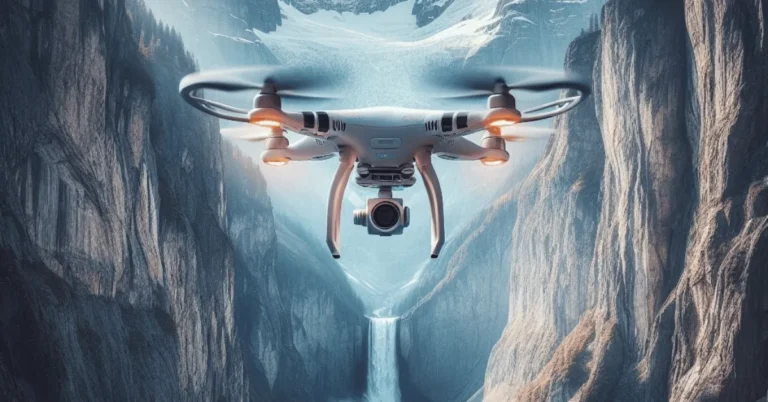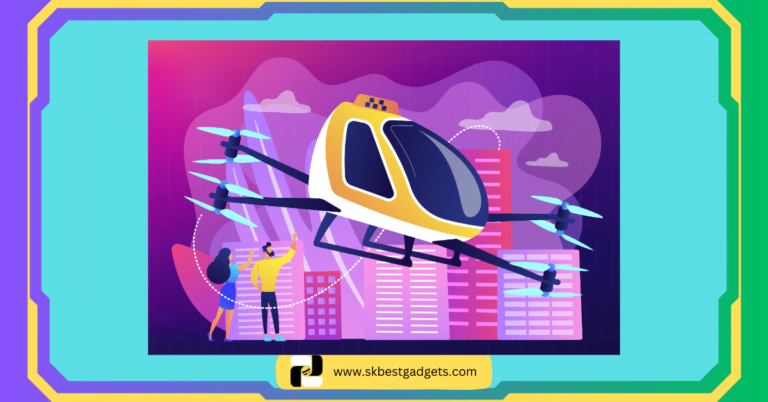How Many Blades Should a Drone Have?

Drone blades, an essential component of any unmanned aerial vehicle (UAV), play a critical role in enabling flight.
These blades, also known as propellers, are responsible for generating lift, which allows the drone to ascend, hover, and maneuver in the air.
By rotating at high speeds, the blades create a pressure difference between the upper and lower surfaces, resulting in an upward force that counters the drone’s weight.
The Importance of Blade Design and Configuration
Stability and maneuverability are heavily influenced by the design and configuration of drone blades. A well-balanced set of blades ensures smooth and controlled flight, while any imperfections or imbalances can lead to vibrations and instability.
The number of blades on a drone can vary, with configurations ranging from two-bladed models to those featuring more complex multi-bladed setups. These variations offer different advantages and trade-offs in terms of performance, efficiency, and handling.
Types of Drones and Their Blade Configurations
Numerous types of drones are available on the market, each tailored to specific applications and user needs.
These range from simple consumer drones designed for recreational use to sophisticated commercial and industrial drones employed in tasks such as aerial photography, surveying, and delivery services. The blade configuration on these drones can significantly impact their suitability for different tasks.
Consumer Drones
Consumer drones, such as quadcopters, feature four blades and are known for their balance of stability and maneuverability. This makes them popular choices for both hobbyists and professionals.
Professional and Industrial Drones
Professional and industrial drones, such as hexacopters and octocopters, have six and eight blades respectively. These configurations offer enhanced lift and redundancy, crucial for heavier payloads and critical missions.
No problem connecting your Tello drone! Check out our guide on How to Connect Your Tello Drone.
Exploring Blade Configurations
Understanding the various blade configurations provides insight into the mechanical and aerodynamic principles that govern drone flight.
This section explores single-blade, dual-blade, tri-blade, quad-blade, hex-blade, and octo-blade setups, highlighting their unique characteristics and applications.
Single-Blade Configurations
Single-blade drones are relatively uncommon but offer distinct advantages in terms of simplicity and reduced weight.
The aerodynamic efficiency of a single blade can be high, but stability is often compromised, making this configuration less suitable for most applications. They are primarily seen in experimental or highly specialized drones.
Dual-Blade Configurations
Dual-blade configurations are more prevalent, particularly in fixed-wing drones and certain types of helicopters.
This setup provides a balance between simplicity and performance, offering adequate lift and thrust for various tasks. Examples include some hobbyist drones and smaller commercial models designed for straightforward aerial photography or surveying.
Tri-Blade Configurations
Tri-blade setups are favored for their enhanced stability and smoother flight characteristics. The three blades offer a good balance between thrust and control, making them ideal for racing drones where agility and speed are paramount.
Popular in the drone racing community, models like the EMAX Hawk 5 utilize tri-blade configurations for their performance benefits.
Quad-Blade Configurations
Quad-blade drones are arguably the most common configuration, providing a perfect blend of stability, control, and power efficiency.
Popular in both consumer and professional markets, quad-blade drones like the DJI Phantom series are renowned for their versatility. They are widely used in photography, videography, and a range of other applications.
Hex-Blade Configurations
Hex-blade setups are increasingly popular among professional photographers and videographers. With six blades, these drones offer improved stability and redundancy, essential for carrying heavier payloads and operating in challenging conditions.
The DJI Matrice 600, for instance, is a hex-blade drone known for its capability to carry advanced camera systems.
Octo-Blade Configurations
Octo-blade configurations represent the pinnacle of stability and power, often employed in industrial and cinematic applications.
With eight blades, these drones can lift substantial payloads and maintain stable flight even if one or two motors fail.
The Freefly Systems Alta 8 is a prime example, used extensively in high-end film production for its reliability and heavy-lifting capacity.
New to piloting a Phantom? Check out our guide on What Are Some Important Things to Know About Operating a Phantom Drone?
Pros and Cons of Different Blade Counts
The number of blades on a drone significantly impacts its performance characteristics. Understanding the pros and cons of different blade counts is crucial for choosing the right configuration for your specific needs.
Here, we examine the implications of using two-blade, three-blade, and four-blade setups, focusing on flight efficiency, stability, noise levels, ease of control, and overall performance.
Two-Blade Configurations
Two-blade drones are known for their high flight efficiency, making them ideal for long-distance flights and extended flight times. They generate less drag, which translates to better fuel efficiency for gas-powered drones or longer battery life for electric models.
However, this configuration often results in lower stability, particularly in windy conditions. The noise level is also relatively high compared to three or four-blade setups. Two-blade drones are commonly used for recreational flying and tasks that require significant endurance.
Three-Blade Configurations
Three-blade drones strike a balance between efficiency and stability. They provide better lift and control, which makes them suitable for aerial photography and videography, where smooth and stable footage is paramount.
The added blade increases drag slightly, reducing flight efficiency compared to two-blade drones but offering enhanced stability and control.
Noise levels are moderate, making three-blade configurations a versatile choice for various applications. Experts often recommend three-blade drones for hobbyists and professional photographers alike.
Four-Blade Configurations
Four-blade drones are designed for maximum stability and control, making them the best choice for racing and high-performance applications.
The additional blades offer superior lift and precise maneuverability, essential for navigating through complex courses at high speeds.
However, this comes at the cost of reduced flight efficiency and increased noise levels. The higher drag means shorter flight times, but for racing enthusiasts, the performance benefits far outweigh these drawbacks.
Four-blade drones are also gaining popularity in industrial applications, where precision and stability are critical.
Want to learn more about how drones are changing the game? Dive into The Rise of Drone Delivery: Revolutionizing Logistics and Transportation.
Choosing the Right Blade Count for Your Needs
When deciding on the ideal blade count for your drone, several factors must be taken into account to ensure optimal performance and satisfaction. To help you make an informed decision, consider the following step-by-step approach.
Determine Your Budget
Drones with different blade counts can vary significantly in price. Generally, quadcopters are more affordable due to their simpler design and widespread availability.
Hexacopters and octocopters, offering enhanced stability and lifting power, tend to be more expensive. Define your budget range to narrow down your options.
Identify Your Intended Use
Are you using the drone for recreational purposes, professional photography, or industrial applications?
Quadcopters are suitable for hobbyists and casual users, while hexacopters and octocopters are preferred for professional aerial photography, videography, and heavy lifting tasks due to their superior stability and payload capacity.
Consider Your Skill Level
Beginners might find quadcopters easier to handle due to their simplicity and ease of control. As you gain experience, you may opt for drones with more blades, which can provide better stability and performance, although they may require more advanced piloting skills.
Evaluate Desired Flight Characteristics
If you prioritize agility and speed, quadcopters are generally more agile. Conversely, hexacopters and octocopters offer greater stability, smoother flight, and better wind resistance, making them ideal for complex aerial maneuvers and high-quality footage capture.
Test Different Configurations
Testing different configurations can be invaluable. If possible, experiment with drones of varying blade counts to get a feel for their performance.
Pay attention to how each configuration aligns with your specific requirements and preferences, making adjustments based on your personal experience.
Wondering Is It Safe to Fly a Drone Near Power Lines? Check out our guide for safe drone flying tips!
Popular Recommendations
For those seeking recommendations, here are a few popular options:
- Quadcopters: The DJI Phantom series offers a good balance of affordability and performance.
- Hexacopters: The DJI Hex Phantom 4 Pro is an excellent choice for those needing more stability and control.
- Octocopters: The Freefly Alta 8 is a top-tier option for professional use.
Each of these models caters to different needs and budgets, ensuring there’s a suitable drone for every enthusiast.







